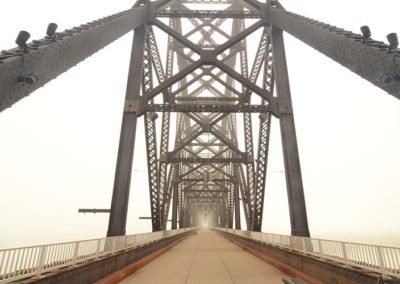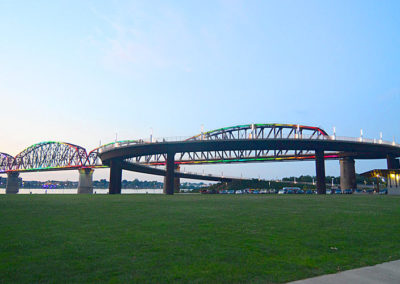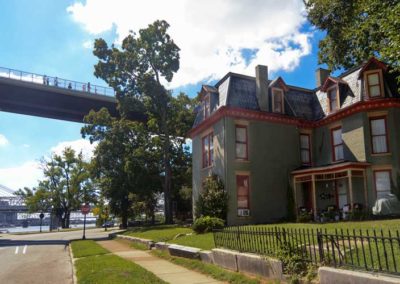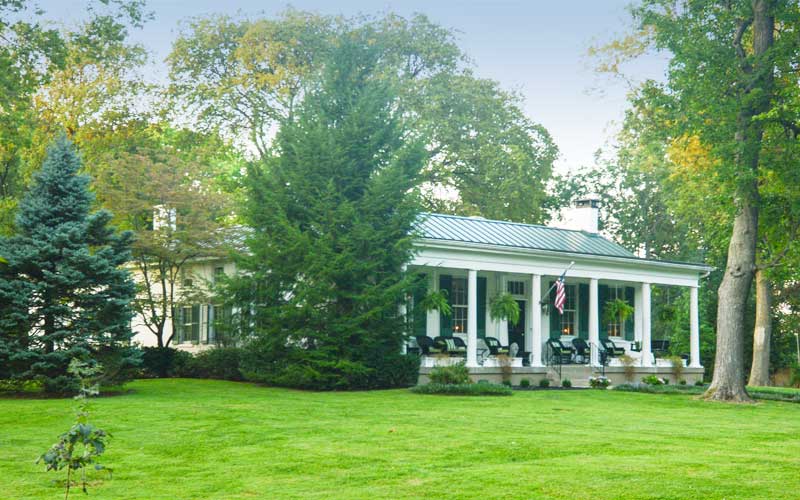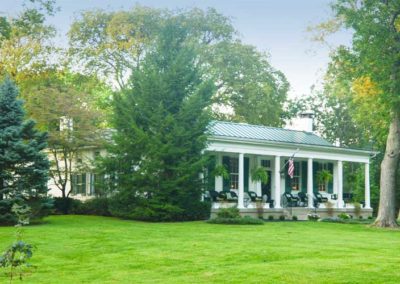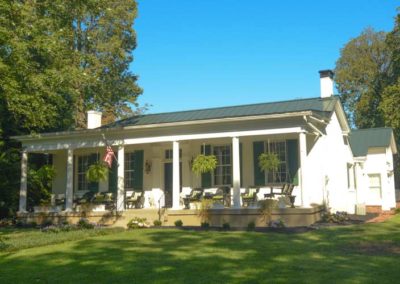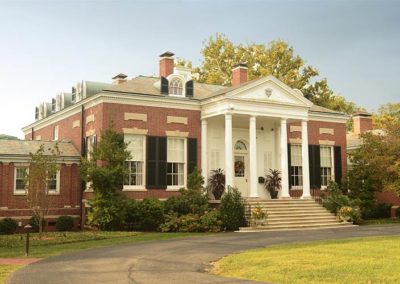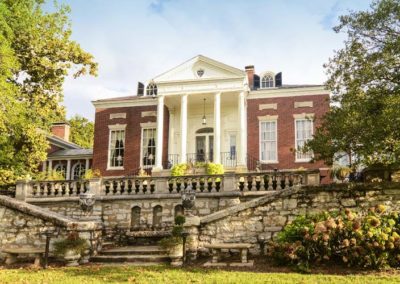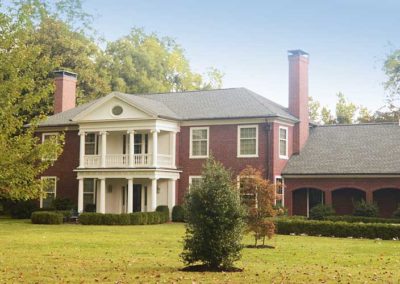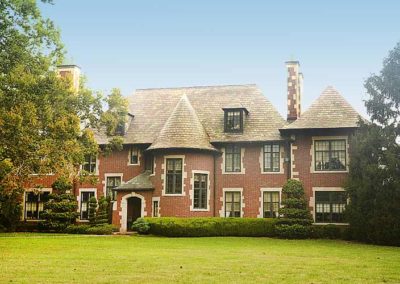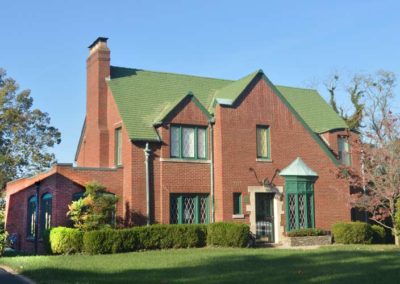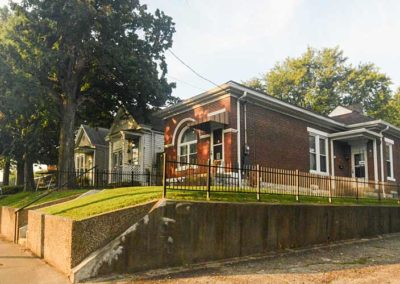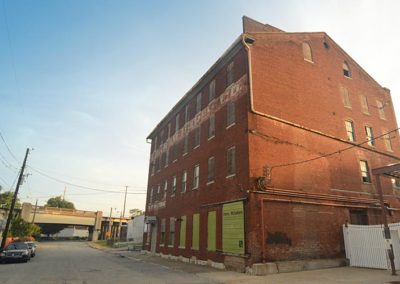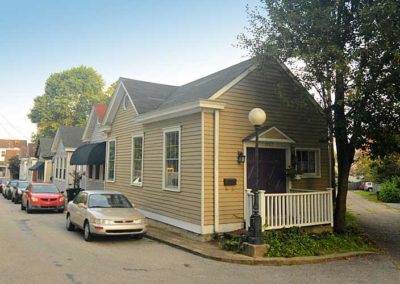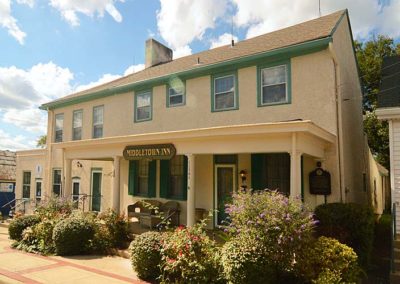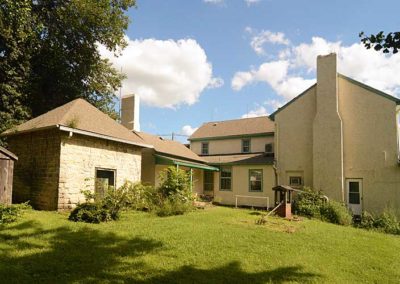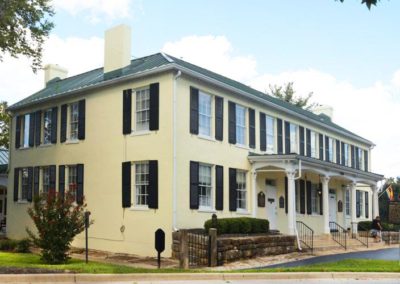
Big Four Bridge
Big Four Bridge

The Big Four Bridge is a six-span former railroad truss bridge crossing the Ohio River from Louisville to Jeffersonville, Indiana. It was completed in 1895 and updated in 1929.
The largest single span is 547 feet long, with the entire bridge spanning one half mile.
The bridge took its name from the defunct Cleveland, Cincinnati, Chicago and St. Louis Railway, which was nicknamed the “Big Four Railroad”. The bridge was decommissioned in the 1960s, when the ramps to the bridge on both sides of the river were removed.
The Big Four is now a pedestrian and bicycle bridge that opened to the public 24 hours a day in 2013. The bridge has millions of visitors each year, making it the most popular urban attraction in the area.
The George Rogers Clark Memorial Bridge downstream is the only other bridge allowing bicyclists and pedestrians to travel across the river near downtown Louisville.
